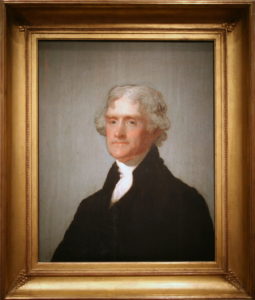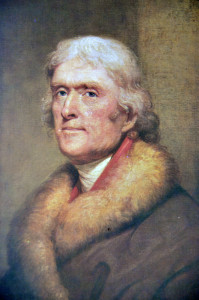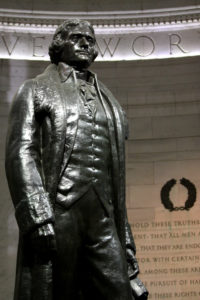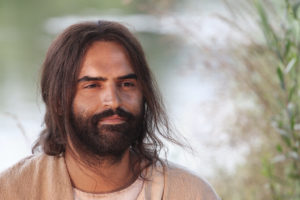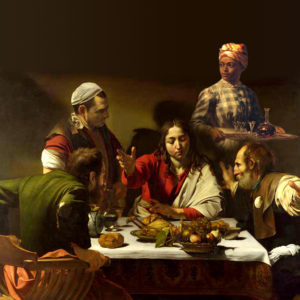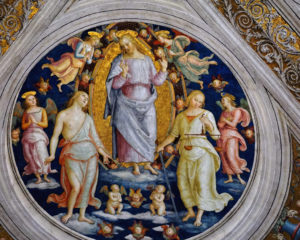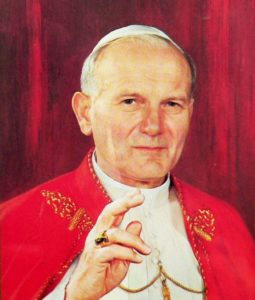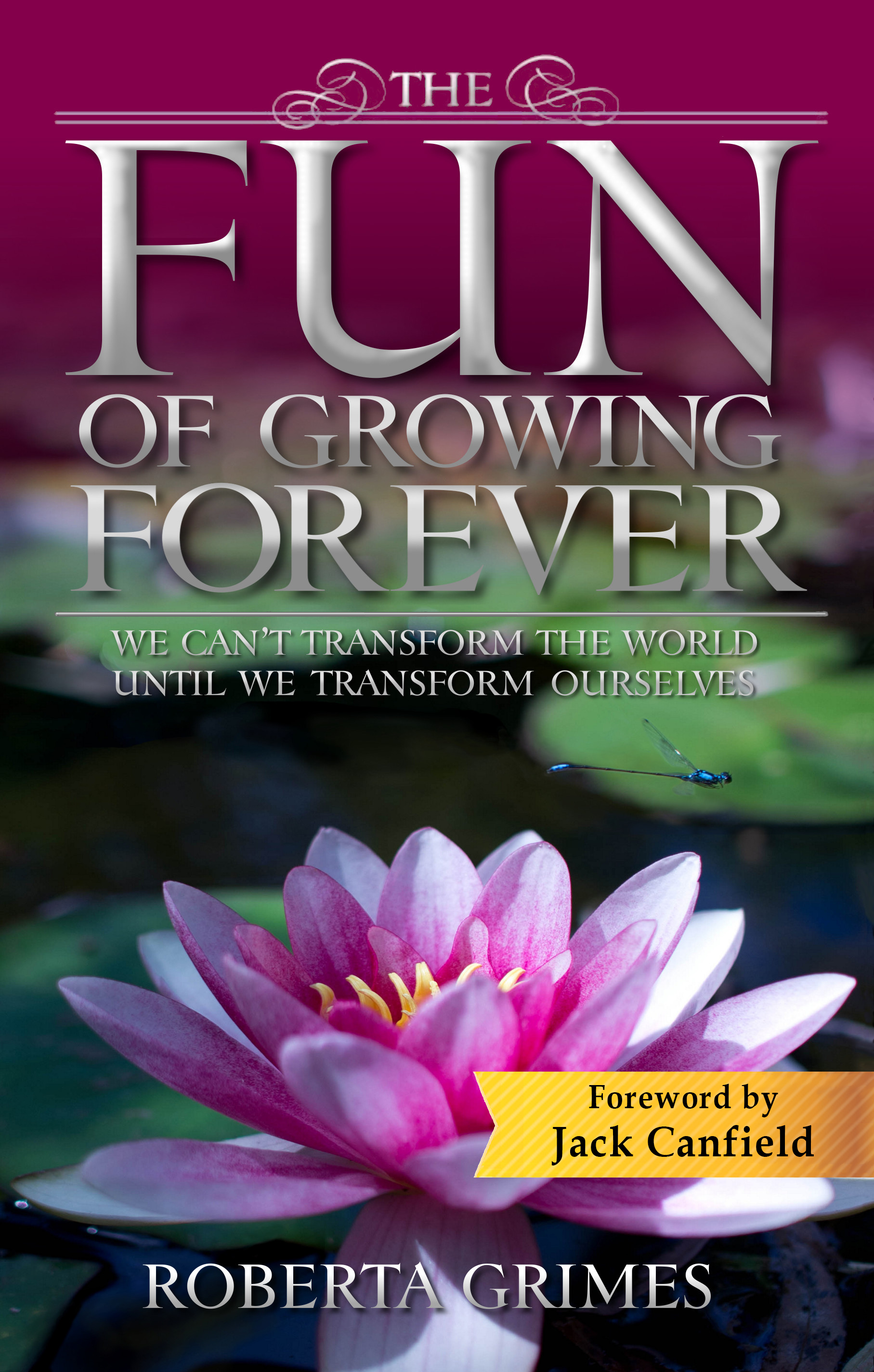“Of publishing a book on religion, my dear sir, I never had an idea.
I should as soon think of writing for the reformation of Bedlam,
as of the world of religious sects.
Of these there must be, at least, ten thousand,
every individual of every one of which believes
all wrong but his own.”
– Thomas Jefferson (1743-1826) to Charles Clay, his parish rector, January 29, 1815
 As is true of each of us, for my whole life I have been lovingly guided. As soon as I was old enough to appreciate the fact that I had a guide who was separate from myself, my guide withdrew and then returned in an experience of light so I could notice the difference. I didn’t get his point, so when I was twenty he gave me a second experience of light; but like many who have such experiences, I thought mine were something like head-thumps from God and not anything more intimate. Eventually I learned about spirit guides, and I knew that I must have one, too; but by then we were working so well together that I didn’t try to know him better. I drive a car without looking under the hood. And by that point, my life was running fine.
As is true of each of us, for my whole life I have been lovingly guided. As soon as I was old enough to appreciate the fact that I had a guide who was separate from myself, my guide withdrew and then returned in an experience of light so I could notice the difference. I didn’t get his point, so when I was twenty he gave me a second experience of light; but like many who have such experiences, I thought mine were something like head-thumps from God and not anything more intimate. Eventually I learned about spirit guides, and I knew that I must have one, too; but by then we were working so well together that I didn’t try to know him better. I drive a car without looking under the hood. And by that point, my life was running fine.
My beloved Thomas wants to complete for you this series about his famous lifetime by describing the task that he undertook soon after he ended his last incarnation. Everyone on earth has a primary guide, and he sees our experience as perhaps a helpful aid to your own understanding.
Becoming a spirit guide is a common step for beings who have lately ceased to incarnate, while they still are close enough to the experience of living on earth to be useful guides for others. He tells me it is common, too, for a first guidance project to include some efforts to wind up the guide’s last incarnations, and in his case he was troubled by some trailing ends from his Jefferson lifetime. So we planned a life for me in which he would help me complete some of my spiritual work while he prepared me to be of use to him. Then, late in my life our focus would shift to my helping him to wind up his Jefferson projects.
 The being who guides me now is emphatically not Thomas Jefferson. That was just one of his many lifetimes, and it is not how he sees himself now. I wouldn’t know his history, even today, but he needed to enlist my help when it came time for us to shift from doing my spiritual work to doing his wrapping-up work; and since while I am in a body I have amnesia about our history together, he knew that dramatically revealing his famous prior life was his likely best chance to persuade me to do what he needed to have done. But he asks that you not think of him as Thomas Jefferson. Rather, he would like you to think of him as simply an eternal being who, like you, has done his best through many lifetimes. And now he especially wants to show you how this guidance process works.
The being who guides me now is emphatically not Thomas Jefferson. That was just one of his many lifetimes, and it is not how he sees himself now. I wouldn’t know his history, even today, but he needed to enlist my help when it came time for us to shift from doing my spiritual work to doing his wrapping-up work; and since while I am in a body I have amnesia about our history together, he knew that dramatically revealing his famous prior life was his likely best chance to persuade me to do what he needed to have done. But he asks that you not think of him as Thomas Jefferson. Rather, he would like you to think of him as simply an eternal being who, like you, has done his best through many lifetimes. And now he especially wants to show you how this guidance process works.
Thomas has guided me in the classic internal way for most of my life. We meet most nights in a conference room that is paneled in what looks like cherry-wood and contains an oblong table. I sit at the midpoint of that table, and Thomas sits across from me. Sometimes we are alone, while at other times there are other guides who come to assist us with various matters. On the night when Jesus met with us, soon after we finished writing Liberating Jesus, it was the Lord who sat across from me, Thomas sat beside Him, and every other seat at that table was taken by advanced beings who were strangers to me. The energy in that room was so overwhelming that I was unable to look at faces, or even to speak.
 Nearly all our work with our spirit guides takes place while our bodies sleep. For most of my life, Thomas and I would talk and make our decisions at night, and I would wake up with our joint ideas and happily set about carrying them out as if they were all my own. But while he was guiding me through my own life-plan, he also was preparing me to help him with his, and I seem to have resisted taking some of those steps. So once in a while he felt forced to intervene in my daytime life. I generally experienced these interventions as strong urges from out of nowhere, a nagging discomfort, just a sense that I had to do something or other; but sometimes his interventions were more dramatic. As I look back, there have been at least seven times when he has intervened this way:
Nearly all our work with our spirit guides takes place while our bodies sleep. For most of my life, Thomas and I would talk and make our decisions at night, and I would wake up with our joint ideas and happily set about carrying them out as if they were all my own. But while he was guiding me through my own life-plan, he also was preparing me to help him with his, and I seem to have resisted taking some of those steps. So once in a while he felt forced to intervene in my daytime life. I generally experienced these interventions as strong urges from out of nowhere, a nagging discomfort, just a sense that I had to do something or other; but sometimes his interventions were more dramatic. As I look back, there have been at least seven times when he has intervened this way:
- Bible-reading. When I was eleven, I began to feel nudged toward a habit of reading the Bible every night. No adult had suggested it, but night after night I would feel edgy until I had read my two or three Bible pages. Eventually I developed a thirty-year habit. If I had not done that, I could not so easily do the work that I am doing for Thomas today.
- Majoring in Christian history. I selected my college major on a push from my guide. No other choice seemed possible, but then I had a moment of rationality as I was about to officially declare it. Wait a minute! What can I do with a major in Christian history? At once, my mind was flooded with the comforting certainty that Christian history was my perfect major and my only possible choice. I just asked my adviser if it would be an acceptable major if I later wanted to go to law school; and that was odd, too, come to think of it, because at the time I had no intention of going to law school.
 Choosing my husband. I had one great love in college. We were beginning to plan a life together, but amid all that anti-Vietnam-War fervor he abruptly took it into his head to “go to San Francisco and join the revolution.” We broke up, but months later I was pining for him and thinking about moving and joining him there when I felt drawn one evening to attend a post-college mixer for the first and only time. I entered that darkened room and saw a halo of light around a man who was seated at the far end of it. We have been married now for forty-eight years.
Choosing my husband. I had one great love in college. We were beginning to plan a life together, but amid all that anti-Vietnam-War fervor he abruptly took it into his head to “go to San Francisco and join the revolution.” We broke up, but months later I was pining for him and thinking about moving and joining him there when I felt drawn one evening to attend a post-college mixer for the first and only time. I entered that darkened room and saw a halo of light around a man who was seated at the far end of it. We have been married now for forty-eight years.- Going to law school. I had never wanted to be a lawyer, but unaccountably I kept thinking about law school. My husband encouraged me, so eventually I did what I am sure my guide had been nagging me to do; and my legal education has been repeatedly useful throughout our lifetime of working together.
- Researching the afterlife. Even the urgency I have felt since childhood to understand what happens after death seems to have come from my spirit guide. I wasn’t afraid to die, I had other interests, but by the time I was out of college the notion of doing that research was my obsession. And by what was surely no accident, I soon came across resources that almost right away convinced me that this was going to be research worth doing.
 Writing My Thomas. One day in the late eighties I came upon a book about Thomas Jefferson’s early life, and instantly I had to have it. Then I felt pressed to contact the author, who encouraged me to write about Thomas Jefferson’s marriage. I learned much later that my researching and writing My Thomas had been the evidence my guide had been asked to provide that I was a channel sufficiently skilled to eventually channel the Lord.
Writing My Thomas. One day in the late eighties I came upon a book about Thomas Jefferson’s early life, and instantly I had to have it. Then I felt pressed to contact the author, who encouraged me to write about Thomas Jefferson’s marriage. I learned much later that my researching and writing My Thomas had been the evidence my guide had been asked to provide that I was a channel sufficiently skilled to eventually channel the Lord.- Writing Liberating Jesus. It must have been sometime in 2014 that Thomas began to urge me to write a book about what Jesus had intended to say in the Gospels. Thomas had promised that I would do it, and I had been preparing for twenty years, but when he told me it was time to begin the work, apparently I refused. Who was I to be telling the world what Jesus had actually meant to say? So he prompted me to consult a medium, and in February of 2015 he told me through that medium who he had been. As soon as he told me I should call him “Thomas,” immediately I heard myself say, “Thomas Jefferson?” He winced. The medium gasped. And all I wanted to talk about was that amazing prior lifetime! But all he wanted to talk about was the fact that he had written a book about Jesus in his Jefferson lifetime that had long since been lost. He hadn’t published it because the time had not been right, but he wanted me to write it now “for this modern age.” He put my choice in the starkest terms, telling
 me that unless we can materially raise the consciousness vibrations of humankind, within two hundred years this planet will be just a barren and burned-out wasteland. But if I would do my designated part and channel his new book about Jesus, he told me I would be helping to ensure that in two hundred years we would be living in the kingdom of God on earth. He didn’t tell me until it was about to happen that I would be channeling Jesus Himself. But with stakes like these, I would have done it anyway. I wanted to please my newly discovered friend.
me that unless we can materially raise the consciousness vibrations of humankind, within two hundred years this planet will be just a barren and burned-out wasteland. But if I would do my designated part and channel his new book about Jesus, he told me I would be helping to ensure that in two hundred years we would be living in the kingdom of God on earth. He didn’t tell me until it was about to happen that I would be channeling Jesus Himself. But with stakes like these, I would have done it anyway. I wanted to please my newly discovered friend.
Thomas was willing to speak with me through a medium for a couple of years, but I never stopped seeing him as Thomas Jefferson. So in the spring of 2017 he began to refuse to work with any medium, and he taught me to recognize his internal voice. It’s a lot like hearing the same note played on a piano and a violin: his voice feels like my own thoughts but it is subtly different, it comes from the left, and it generally offers a different perspective. He doesn’t interfere in my daily life, but if I am having a relevant conversation or writing something that matters to him, he dominates. How easy this is now! He wants you to know, just as he has taught me, that recognizing a spirit guide’s voice is easy if we will just open-mindedly listen.
He tells me that we even are making progress on his Jefferson to-do list:
* As Jefferson, he had intended to emancipate the slaves. He had planned to marry an abolitionist and inherit with her hundreds of family slaves so the issue would  be central to his life; but Patty died young, and his attention shifted toward instead building the United States. He tells me that a proper emancipation still has not been done! But we have written a book that he hopes will eventually help to at last begin to jump-start that process.
be central to his life; but Patty died young, and his attention shifted toward instead building the United States. He tells me that a proper emancipation still has not been done! But we have written a book that he hopes will eventually help to at last begin to jump-start that process.
* As Jefferson, he had wanted to bring the teachings of Jesus to the world. This is where his focus is now, and he has put a lot of effort into sufficiently enlightening me so together we can be of service. He tells me that he and I at last are making what he sees to be meaningful progress.
People sometimes ask me whether we remain ourselves after we leave these bodies. At this point my answer is, “Yes and no.” Our awareness continues from one identity to the next, our spiritual development carries on with no break, and some core personality quirks remain. My guide is still intellectually curious, ardent about what he thinks is important, and serious. He does not suffer fools. His greatest transformation from his having been Thomas Jefferson is his new spiritual certainty: he personally knows and reveres Jesus as an aspect of the Godhead Itself, and his obsession has become the spiritual advancement of all of humankind. As Jefferson he had said, “I am of a sect by myself, as far as I know” (from his letter to the Rev. Ezra Stiles, president of Yale University, June 25, 1819). Today he tells me with satisfaction that we are about to give the Lord His true Way. And it won’t be a Christian sect at all! Instead, Thomas Jefferson’s “sect by myself” is the start of the genuine spiritual movement that Jesus came to earth to begin.
“In our Richmond there is much fanaticism, but chiefly among the women.
They have their night meetings and praying parties,
where, attended by their priests, and sometimes by a hen-pecked husband,
they pour forth the effusions of their love to Jesus,
in terms as amatory and carnal
as their modesty would permit them to use to a mere earthly lover.”
– Thomas Jefferson (1743-1826) to Dr. Thomas Cooper, Nov. 2, 1822

